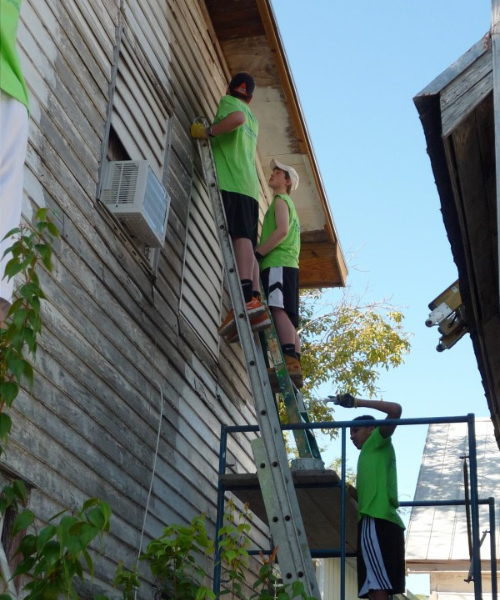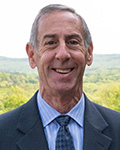Feature image: Avon Old Farms students worked alongside other groups to restore homes in Key West.
For seven years, Avon Old Farms’ Director of Human Resources Jennifer Hill and I spearheaded a spring break initiative taking students to Key West, Florida, to volunteer with Habitat for Humanity’s “A Brush with Kindness” program. The program assists low-income families in repairing and renovating their homes so they can continue to live in them safely. It was perfect for a group of high-school aged volunteers, as so many Habitat chapters don’t accept volunteers under the age of 18.
The genesis of this endeavor was spontaneous: I originally signed up to chaperone as a substitute: two faculty members had organized the trip, but one dropped out. I volunteered to fill their spot, motivated by a desire to connect with the students and to have some fun while working with them. Then the other faculty member dropped out at the last minute, and I asked Jennifer if she was interested in joining us. It was the beginning of a great tradition which became one of the highlights of my year, complementing my other engagements outside the business office, such as teaching a week-long personal finance course.
Each year, our chosen destination was the Key West chapter of Habitat for Humanity, which drew the occasional raised eyebrow. The location, however, was grounded in practical considerations — the allure of a warm climate coupled with the meaningful volunteer work and lack of an age restriction made it a perfect fit for a group of young men on their spring break.
Often our group of 10 would work alongside another group of volunteers, and it was amazing how much could be accomplished in just one week’s time.
Together we’d spend our time tackling exterior issues like sanding, priming and painting houses to preserve their historical value; some of the structures were over 100 years old. Occasionally we would work inside a home under the supervision of a skilled carpenter or another tradesperson, making it an excellent hands-on learning opportunity for our students. I’d never done any of that kind of work, aside from being a homeowner and fixing minor things. But despite my lack of prior experience in this domain, the Habitat leaders ensured we acquired the necessary skills to do the work safely, from replacing rotted boards to installing gutters. Often our group of 10 would work alongside another group of volunteers, and it was amazing how much could be accomplished in just one week’s time.

The transformation of the first house we worked on remains vivid in my memory. When we were done, it just looked terrific. Witnessing tangible progress was crucial for the students too, who worked diligently throughout the week.
Our accommodations were humble, sleeping on air mattresses in a church and preparing meals there as well. After a hard day’s work, we ensured the boys had an opportunity to enjoy themselves, taking them to the beach for an hour or two once we had wrapped up at the job site.
Over the years, we honed our approach, setting ground rules and organizing a day for recreational activities such as snorkeling, fishing trips or simply enjoying the beach. During our first year, students were contributing to the cost of the trip, and in an effort to mitigate costs, I drove a 15-passenger van four hours from the Miami airport to Key West, staying on the road well into the night. Thankfully, beginning the second year, an alumnus who heard about the good work we were doing decided to support the trip financially. His donation facilitated direct flights and added the ability to eat out a few nights as a group, enhancing the overall experience. During the first year, the trip may not have appealed to all students due to the cost. Having the financial backing of an alumnus made the trip open to truly anyone in the student body in the second and subsequent years.
With only 10 spots available and a lot of student interest each year, Jennifer and I collaborated closely with the faculty to select deserving and responsible students. This was critical because we were taking them to a place that presented its share of potential challenges. All the boys who participated during my seven years did quite well. The students volunteered out of a sense of community, worked hard and felt good about helping others.
After returning from our 2020 trip on the heels of the pandemic, regrettably, subsequent travels have not yet resumed due to other pressing priorities. Nevertheless, their impact endures. Some of our current faculty members were once participants, showcasing the lasting influence of this transformative experience. As I retire this year, I am hopeful someone in the community will choose to pick up the mantle and carry forward our tradition of service in the future.




